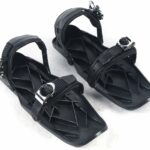It’s a common frustration faced by skiers. You hit the slopes, have a great day, but then fogged up goggles get in the way!
This is an issue often faced by snow sports enthusiasts. Regardless of the type of goggles you have, nature always interferes to fog your goggles up.

Although it isn’t always possible to prevent your goggles from fogging up, below you’ll find a couple of tips that should help to mitigate the problem. But first, let’s take a look at why ski goggles fog up in the first place.
Why Do Ski Goggles Fog Up?
The best place to start when preventing your goggles from fogging up is understanding why your ski goggles fog up in the first place (see also “What Is VLT In Ski Goggles?“).
Once you know why your goggles are fogging up you can implement a solution to the problem.
Ski goggles fog up due to the moist and warm air inside the goggles making contact with the cold surface of the lens.
This humid air causes condensation to form on your lens. So how can you prevent this from happening?
Keep Moving
A lot of goggles nowadays have some kind of ventilation, and some goggles even have fan systems powered by batteries.
The idea behind these ventilation systems is to allow the cold air in and push the warm air out. Continuous movement is the best way to maintain air flow.
When you get off the chair lift and your goggles are a little foggy, observe how the fog dissipates as you head down the mountain at a good speed.
After all, you don’t want to head down the slopes with impaired vision, so make sure your lenses have cleared up before you hit the slopes.
Lift Your Goggles To Let Some Air In
Lifts usually move slowly, so even when your goggles are ventilated, there may not be sufficient wind for this feature to function properly.
To make sure your goggles stay cool, lift them off your face a little to allow some air to come in. You only have to do this for a few seconds, as this should be enough time to let the air in.
If your gloves are covered in snow, make sure you don’t get moisture or snow in the vents of your goggles, as this could exacerbate the problem.
Inspect The Vents For Moisture And Snow

If it’s a particularly snowy day or you’ve fallen, then the padding and vents of your goggles may already be covered in snow. This could increase the humidity inside your goggles which you need to get rid of as soon as possible.
However, you should be careful when using your fingers or gloves to wipe the snow off as you may actually rub the snow in. Rather, you should tap your goggles on a hard surface to remove the snow.
If your goggles’ padding is saturated with water, then you will need to allow them to dry on their own.
Utilize A Visor
When it’s snowing, a visor helmet that is properly fitted is the only barrier between the top half of your goggles and moisture.
When shopping for these helmets, make sure there is a small gap between the visor and the top vents of the goggles. If the vents are completely blocked, it will affect their function.
Avoid Resting Goggles On Your Head
Heat rises, so if you place your goggles on a vented helmet or on the top of your head, then all the humid, hot air from your body is going into the goggles.
It’s a good idea to not remove your goggles while you’re skiing (see also “Do You Need Goggles To Ski?“) unless you absolutely must.
Dry Out Your Goggles Properly
Once you’ve finished skiing, we recommend placing your goggles on the counter or another place where they can naturally dry.
While some people like to dry their goggles with a hair dryer, this can damage your goggles gradually. It’s best to be patient and let them dry on their own.
Keep A Spare Pair Of Goggles Handy
Drying goggles can take some time, and sometimes the foam on the inside of the goggles gets wet and – unfortunately – nothing can be done about it. This is why having a spare pair of goggles handy is crucial.
You don’t have to break the bank with this spare pair. You don’t even have to spend more than $20 on these spare goggles as long as they have vents and double-pane lenses.
After all, it’s better to ski with cheap, dry goggles than no goggles at all.
Don’t Tuck In Your Balaclava Or Neck Warmer
If it’s a particularly chilly day, you may want to tuck your neck gaiter and balaclava under your goggles to ensure your face is totally sealed off from the cold. However, this is a bad idea.
Our breath is moist and warm, especially if we’re exerting ourselves particularly hard and are sweating. If this warm moisture has a direct way to your goggles, then your goggles are going to fog up pretty quickly.
Rather, a better idea would be to leave a small gap between your balaclava and goggles, which leaves your nose exposed slightly.
Avoid Overdressing
While it might be cold on the slopes, it’s important not to dress too warm. Rather, the most important thing is to dress appropriately for the weather.
Easily removable layers and having opening vents in your jacket is an effective way to stop your goggles from fogging up.
The more you sweat, the more heat and moisture your body will produce. Moisture has to go somewhere and as heat rises, a lot of it will travel up your neck, out of your layers, and fog up your goggles.
Ensure Your Ski Mask Has Proper Ventilation
Even when there is a gap between your goggles and ski mask, hot air can still rise up as you breathe. Ski masks generally have two types of ventilation.
Ski masks either have an airhole that your breath can travel out of, or a mesh material which your breath can pass through.
Final Thoughts
Foggy goggles are not just annoying, but as they can impair your vision on the slopes they can be dangerous too.
Fogged up ski goggles are such a common problem that it may feel like there is no solution, but we hope our easily implementable tips have proven that solutions are out there!
- How to Choose a Skim Board - September 10, 2023
- is Skim Boarding Hard? - February 8, 2023
- How To Wax a skim board - February 8, 2023










